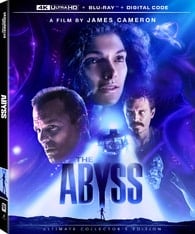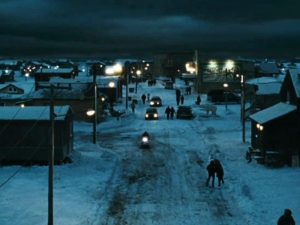★★★★★
Directed by: Fabrizio Gammardella
Written by: Fabrizio Gammardella
Film Review by: Vikas Yadav

Fabrizio Gammardella’s A Piglet’s Tale is nothing short of alchemy. Resembling something made from camp Studio Ghibli, this animated short is one of the best things I have seen this year and deserves to be seen by everyone no matter how far and away you live. This is the sort of work that announces the presence of a stunning director, one that performs magic tricks by combining the tools of film-making with animation. After watching A Piglet’s Tale, I rushed to look at the other crew members’ names who helped create this vision. My heartfelt congratulations to all of them!
To describe A Piglet’s Tale as dreamlike would be an understatement. Its exteriors exist on a surreal plane, while the interiors are connected to the reality of this world. People inside a photo frame and a painting move as if tethered to actuality. Juxtaposing them are the “real” images like that of employees crackling on the keyboard. In A Piglet’s Tale, time doesn’t move but flows like a wind. The image of two children playing transitions smoothly to them as a married couple. They dance on a bridge while a photographer captures them on his camera. Everything appears like a fairy tale but make no mistake, this is not a fairy tale, far from it.
The plot basically follows a newly-wed couple that finds no success in being a parent. They struggle to have a child. It is when they move to the countryside, after leaving their jobs in London, that a baby is finally born. The parents are happy, the baby is happy. All looks well, apparently. But this is not a normal baby. He can shift between his human form and, well, his pig form! As per the director’s statement (and the lines at the end of this short), A Piglet’s Tale is about animal welfare and how they are killed on a large scale for food worldwide. But that’s on the surface. Great art always simultaneously works on different levels. Though the message behind this surface reading is crucial and A Piglet’s Tale delivers on it, why stop there? Why not go further into it?
The kid’s “pig form” can be interpreted as a unique ability, a quality exclusively existing within him. We all have talents that separate us from the crowd. You could be a painter, while your best friend a singer. Hell, you are different from your own sibling. Every child is special. You can also flip the coin and convert the “unique ability” into “unique disability.” The “pig form” could also be seen as a physical or mental disorder. When the baby plays outside his home (as a piglet), the children laugh at him. But those children could be swept aside. We cannot expect the outside world to understand us. Fortunately, we can fall back on the affection of our parents. Or could we? What if they, too, refuse to accept our natural identity? What happens when the parents butcher your talent (you cannot be a singer, pursue a degree in computer science) or try changing you into a “normal” human being? A Piglet’s Tale compiles both the surface level and the deeper level thoughts into a shocking finale that shakes your soul and haunts you long after the credits swipe away. Gammardella used to work as curator of a silent films’ archive. It makes sense then that this short is rendered without dialogue and manages to leaves you speechless. A Piglet’s Tale is both real and ethereal at the same time. Gammardella is a fantastic director who clearly worked with a fantastic group of people. A Piglet’s Tale is excellent!




